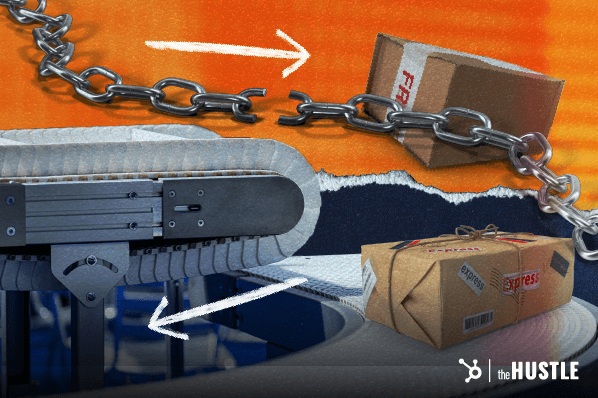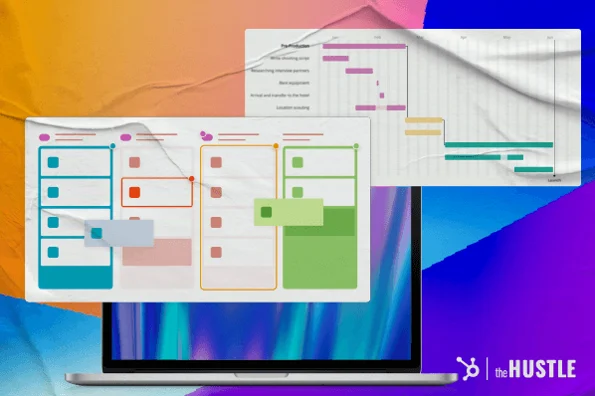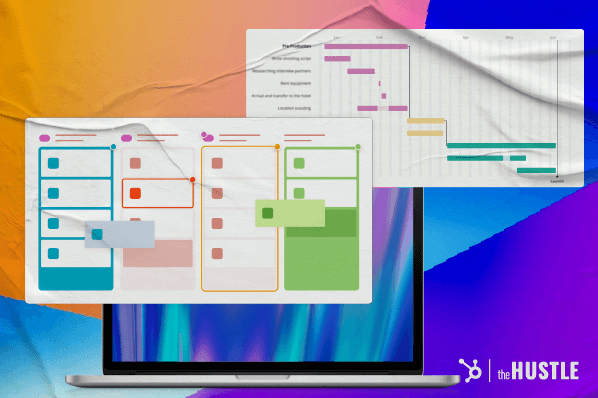Surprisingly, only 32% of software-as-a-service (SaaS) companies feel confident that their products meet user expectations.

The question for product managers and user experience (UX) teams to answer is, “How do we know if we’ve built a great product?” One excellent place to start is by using analytics to understand the way people interact with your product.
Developing and improving products (especially digital ones) without understanding user interactions and behavior is like trying to achieve your goal with a blindfold on. Product analytics offers valuable insight into customer engagement, and it’s a key strategy businesses can use to drive growth.
Table of contents:
- What is product analytics?
- The importance of product analytics
- Product analytics examples
- Best product analytics platforms
What is product analytics?
Product analytics is the practice of tracking and analyzing how users engage with your product, usually with help from software. With this data, your product team can understand and visualize the customer journey and find opportunities to improve it.
You can use analytics tools on various types of products and customer touchpoints, including websites, online stores, mobile apps, and SaaS products.
With each product type, you can record different user actions and metrics related to its use. For instance, if you’re tracking behavior on a mobile app, you can look at downloads, opens, purchases, and uninstalls. You can also monitor how much time people spend on the app every time they open it.

Free Product Go-to-Market Kit
Free templates to ensure that your whole team is aligned for your next product launch.
- Product Launch Template
- Product Roadmap Template
- Sales Plan Template
- And more!
Download Free
All fields are required.

The importance of product analytics
Product analytics gives businesses a deeper understanding of how users engage with products, including information about which features keep people engaged and lead to conversions and customer retention.
For example, 60% of product-led companies use product experience data to measure user engagement, and 54% use it to gauge customer satisfaction. These metrics allow companies to better understand what’s most important to users and use those insights to inform their product development roadmap.
Using product analytics data as part of your product management strategy enables you to make data-driven choices about where to invest your team’s development time. As a result, you’ll be better able to make product decisions that reduce drop-off, increase user engagement, and improve your customer experience.
Product analytics examples
There are several use cases for product analytics, depending on what you want to know. Here are some common types of analyses your business can perform to continually improve your product, increase customer retention, and build long-term growth.
A/B testing
A/B testing requires releasing two feature or user interface variations and comparing their performance. This is especially useful for informing the development of new features.
Say you sell graphic design software and want to see if your users will benefit from video editing features. You can release a version of the software with this new feature to a smaller group of customers and compare their engagement data with the rest of your customers.
Best for: Testing new features
Behavioral analysis
User behavioral analysis is the process of studying how customers interact with your product to identify patterns and friction points that prevent users from returning.
Peter Michaels, CEO of parental monitoring company Yeespy, recalls using behavioral analysis to discover that users who went through one particular tutorial had much higher retention rates.
As a result, he says, “We concentrated on making the onboarding process more interactive and educational for all users… Over the course of a few months, our user retention rates increased by 20%.”
Best for: Identifying and addressing bottlenecks in the user journey
Churn analysis
Churn analysis involves taking a closer look at the behavior of people who abandon the product to see which customers are most likely to leave and when. Analyzing churn lets you identify and address the issues that cause customers to leave, so you can create a better product.
Churn analysis is also useful for revenue forecasting, as it shows how many customers leave and how long it takes for the average user to abandon the product after their first use.
Best for: Reducing customer churn
Cohort analysis
A cohort analysis involves dividing your dataset into different groups of customers and comparing metrics on adoption, engagement, and retention.
For example, say your SaaS company wants to compare product usage between three price tiers: free, basic, and premium. You can group the dataset based on which plan each user has signed up for.
Then, you can analyze activity levels to see which group uses the product most frequently, which features drive engagement, and who is most likely to remain a customer.
Best for: Identifying high-value customer groups
Conversion analysis
A conversion analysis compares the customers who converted (such as upgrading from a free trial to a paid subscription) to those who didn’t. The goal is to understand which actions make a user more likely to convert.
Say you have a paid meditation app with a one-week free trial. You may run a conversion analysis and find that users who complete at least three meditations in the first week are most likely to convert.
Best for: Identifying which customers are more likely to convert
Funnel analysis
Funnel analysis involves mapping the steps users take when interacting with your product. It’s helpful to use along with conversion analysis because it lets you visualize different user paths and discover which journeys lead to drop-off or retention.
Derek Hathaway, sales director of medical molding company VEM Medical, used funnel analysis to identify and address a major drop-off point.
“We discovered that users were abandoning our product at a specific step in the funnel due to a confusing user interface. We used this insight to redesign the interface and saw a significant increase in conversions,” he says.
Best for: Understanding user drop-off
Milestone analysis
Milestone analysis enables you to identify the activation moments along the user journey that make people more likely to realize the value of your product and stay engaged.
For example, if you have a SaaS CRM product, you can analyze the actions of your most engaged users and see that they share milestones, such as importing contact data and adding email automation. With this knowledge, you can design your product and onboarding to encourage new users to reach these milestones.
Best for: Identifying the actions that high-value customers take
Retention analysis
Retention analysis involves looking at user cohorts based on how long people return to your app after signing up.
With this analysis, you can see which features drive repeat use by comparing the actions of people who dropped off after one day to those who continue to return after a month. Then, your product team can prioritize those features in the onboarding and design.
For example, your project management software company might find that customers who add members to their team on the first day are more likely to continue using the product after one month. So, your team might remove any friction from adding team members and ensure this process is covered in onboarding.
Best for: Identifying features that drive repeat use

Free Product Go-to-Market Kit
Free templates to ensure that your whole team is aligned for your next product launch.
- Product Launch Template
- Product Roadmap Template
- Sales Plan Template
- And more!
Download Free
All fields are required.

Best product analytics platforms
72% of companies that use a product-led growth strategy have product analytics software. These tools are crucial for tracking key product metrics and behavioral data so you can make better decisions.
Here are three of the top product analytics platforms to consider.
Mixpanel
Mixpanel is a user-friendly product analytics tool that’s excellent for monitoring customer actions on web-based products (like streaming services) and mobile apps.
Mixpanel offers real-time insights into engagement, retention, and conversions. The platform also provides easy segmentation and custom events tracking that lets you tailor the analytics to your product. It’s simple to set up, making it ideal for startups and small to medium businesses (SMBs).
Best for: Startups and SMBs
Amplitude
Amplitude is a digital product analytics tracking tool that provides robust user activity tracking plus advanced features like funnel optimization and user action predictions.
The platform’s wide range of customization options makes it a great choice for large enterprises, SaaS companies, and brands that have more complex user journeys, such as fintech providers.
Best for: SaaS and enterprise companies
Pendo
Pendo is a product experience platform that specializes in helping companies optimize product adoption.
You can use the platform to automatically track user actions, deliver in-app messages, provide customer support, and create onboarding flows. It also has features to request user feedback, giving you access to both qualitative and quantitative data.
Best for: Brands that want to combine product analytics and customer support
Running a business without a solid product is like building a home without a strong foundation. If you want to create long-term business growth, insight into product performance and user behavior is a must.
Finding the right analytics tool can mean the difference between a product strategy based on your best guesses and one based on informed decision-making.
![→ Download Now: Free Product Marketing Kit [Free Templates]](https://no-cache.hubspot.com/cta/default/53/08b5e1f4-5d26-405b-b986-29c99bd0cb14.png)









